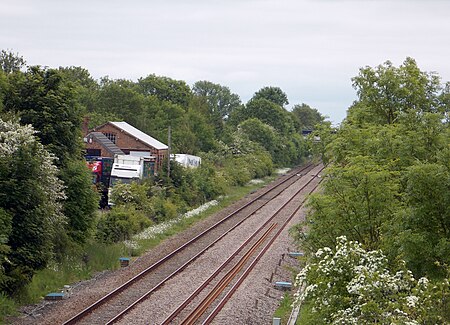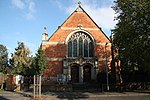Helpringham railway station
Disused railway stations in LincolnshireFormer Great Northern and Great Eastern Joint Railway stationsLincolnshire railway station stubsPages with no open date in Infobox stationRailway stations in Great Britain closed in 1955 ... and 2 more
Railway stations in Great Britain opened in 1882Use British English from August 2015

Helpringham railway station was a station in Helpringham, Lincolnshire. The station was opened by the Great Northern and Great Eastern Joint Railway on 6 March 1882.The station closed for passengers on 4 July 1955.
Excerpt from the Wikipedia article Helpringham railway station (License: CC BY-SA 3.0, Authors, Images).Helpringham railway station
Station Road, North Kesteven Helpringham
Geographical coordinates (GPS) Address External links Nearby Places Show on map
Geographical coordinates (GPS)
| Latitude | Longitude |
|---|---|
| N 52.9527 ° | E -0.3179 ° |
Address
Helpringham
Station Road
NG34 0FG North Kesteven, Helpringham
England, United Kingdom
Open on Google Maps








